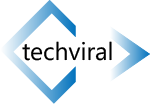How to Use the WWHW (Why, What, How, What If) Framework In Student Report Writing? [With Examples]
When it comes to writing a student report, you may feel some pressure. It’s easy to get lost in all the information you’re trying to gather and all the different ways you could present it.
The WWHW framework gives your student report writing an easy way. Let’s find out how it works and how it can help you write your next report!
What is the WWHW Framework?
The WWHW Framework (Why, What, How, What If) is a way of thinking about your ideas and researching the issue (the one you have at the heart of your report) in a clear, concise, and engaging manner —for both you and your readers or listeners. While your professor may not directly require you to use the framework in your paper, it can help with report writing significantly.
The WWHW Framework is a simple yet powerful tool for representing a researched issue from several angles. It allows for going deeper into the root reasons, suggesting ways to solve the problem, and pointing out the importance of further research or action. Let’s take a quick look at its elements.
- Why. This is where you think about WHY something happens, what it means, and how it affects other people and things in a specific environment. Why are the issues you’re researching and representing in the report important? Why your readers or listeners should pay attention to this problem?
- What. In this section, you should dwell on WHAT happened and WHY it happened that way. So, what are the facts? What happened first? What happened next? In this part, you have to provide a background for the issue you are studying and reporting on.
- How. This part provides room for you to analyze HOW something works or happens. So, in your report, you will have to deeply analyze the reasons behind the researched issue and provide science-based suggestions on how to improve, fix or change the specific process or situation.
- What if. This is where you think of all the different POSSIBILITIES for what could happen in the future if something changed or stayed the same as it was right now. Use this paragraph to conclude your research and overview the possible consequences of taking a certain action/not taking any action.
Why Using the WWHW Framework in Student Report Writing
Using the WWHW framework in your report writing allows you to kill two birds with one stone. Below are the advantages of this approach that your professor will also appreciate.
- Logical structure. Each section of the WWHW framework corresponds to the classical structure of any academic paper. Put your “why” into an introduction, continue with “what” and “how” in the body paragraphs, and conclude your report with “what if”. Following these logical steps, you can stay focused on what matters in each of the paper’s sections.
- Clarity. The WWHW framework gives you a complete idea of what to write about in each of the paragraphs. With its help, you will no longer suffer from writer’s block since it provides you with a ready-made outline. The only task remaining is to find the science-based answers to the framework’s questions and put them on paper.
- Time management. If you want to deliver your report on time, you’ll need to plan it out and stick to the schedule. The WWHW framework has already done the planning part for you, dividing your report into four logical parts. Now, your turn to set your deadlines for each of the sections and comply with them.
- Reader’s engagement. For example, if you plan to use your report as the foundation for a speech or presentation, the WWHW structure makes it easier for the audience to follow you and stay engaged. The trick is that different people learn in different ways, so there are “Why”, “What”, “How” and “What If” types of learners. The WWHW framework covers them all, so this approach to representing information will be winning regardless of the topic and the audience.
How to Write a Report According to the WWHW Framework – Tips and Examples
Now, after you’ve caught the essence of the WWHW framework and the ways it simplifies your report writing, discover some tips on how you can use it in practice.
Intro – Why
Introduce your topic by overviewing what you’re going to talk about and why it’s important. Here is how you can begin your report on the Impact of Climate Change on Vulnerable Populations, for example.
| Scientists across the world agree that now, humanity can neither stop nor prevent climate change. More than 13 years ago, in his “Innovating to Zero” speech at TED2010, Bill Gates stated that “we need miracles to avoid planetary catastrophe”. Climate change affects the planet globally but it disproportionately impacts vulnerable populations, especially those living in poverty. That’s why in this report I would like to take a deep look at the ways climate change impacts the poorest layer of the global population, make projections for the nearest future, and suggest science-based strategies to deal with this issue. |
Body Paragraph 1 – What
Explain what’s the issue at the heart of your report. Following our example, the issue is global climate change. In this section, citations from the other studies, relevant facts, and up-to-date statistics will be appropriate.
| According to the Climate Change 2022 Report, more than 40% of the world’s population is highly vulnerable to climate change. The majority of them are people from non-developed countries, mostly located on the African continent and including but aren’t limited to the Central African Republic, Chad, Mali, Burkina Faso, and Mozambique. The Foreign Policy Research Institute has discovered that African content suffers from climate change disproportionally but significantly more than any other part of the world. Being ultimately dependent on nature, and thus, agriculture, these populations are also exposed to the worst health impact of climate change because of such social factors as lack of healthcare access and housing. |
Body paragraph 2 – How
Based on the evidence you’ve collected and the solutions you’ve come across during the research, suggest one to several tactics on how to deal with the problem you deliver a report on. Let’s proceed following our example.
| So, what can be the possible solution to the problem and how can humanity slow down the process of climate change? Is there a way to help the most vulnerable populations survive through it? In his “Innovating to Zero” speech, Bill Gates suggested aiming at zero emissions by 2050. In his opinion, achieving this goal is possible by investing in clean energy technologies development, improving the efficiency of industrial processes (to decrease energy consumption), and changing behavior patterns on both personal and business levels. |
Conclusion – What if
In this section, make some science-based projections and reflect on the possible consequences of taking or not taking action. Here is how it may sound.
| In conclusion, climate change is having a devastating impact on people in non-developed countries, particularly in terms of food and water security. The World Health Organization estimates that between 2030 and 2050, climate change is expected to cause approximately 250,000 additional deaths per year, from malnutrition, malaria, diarrhea, and heat stress. McKinsey also states that climate hazards such as heat, flooding, and water stress could impact 1 in 2 people globally by 2030. If we don’t take action to reduce our greenhouse gas emissions and mitigate the effects of climate change, we risk creating a world in which hunger, water shortage, and displacement are the norm. So, the time for action is now. We cannot afford to wait any longer. The future of our planet and the well-being of millions of people depend on the choices we make today. |
Conclusion
So, what have you learned from this article?
You can use the WWHW framework in student report writing to make it well-researched, clear, and concise. By asking yourself “why”, “what”, “how”, and “what if” questions as you write, you’ll be able to ensure that you’re not just presenting facts — you’re also making connections between them. Use this simple yet effective practice to deliver high-quality reports, engage your audience and get full grades from your professor.

![How to Use the WWHW (Why, What, How, What If) Framework In Student Report Writing? [With Examples] 1 How to Use the WWHW](https://techviral.tech/wp-content/uploads/2023/03/How-to-Use-the-WWHW--800x445.webp)


